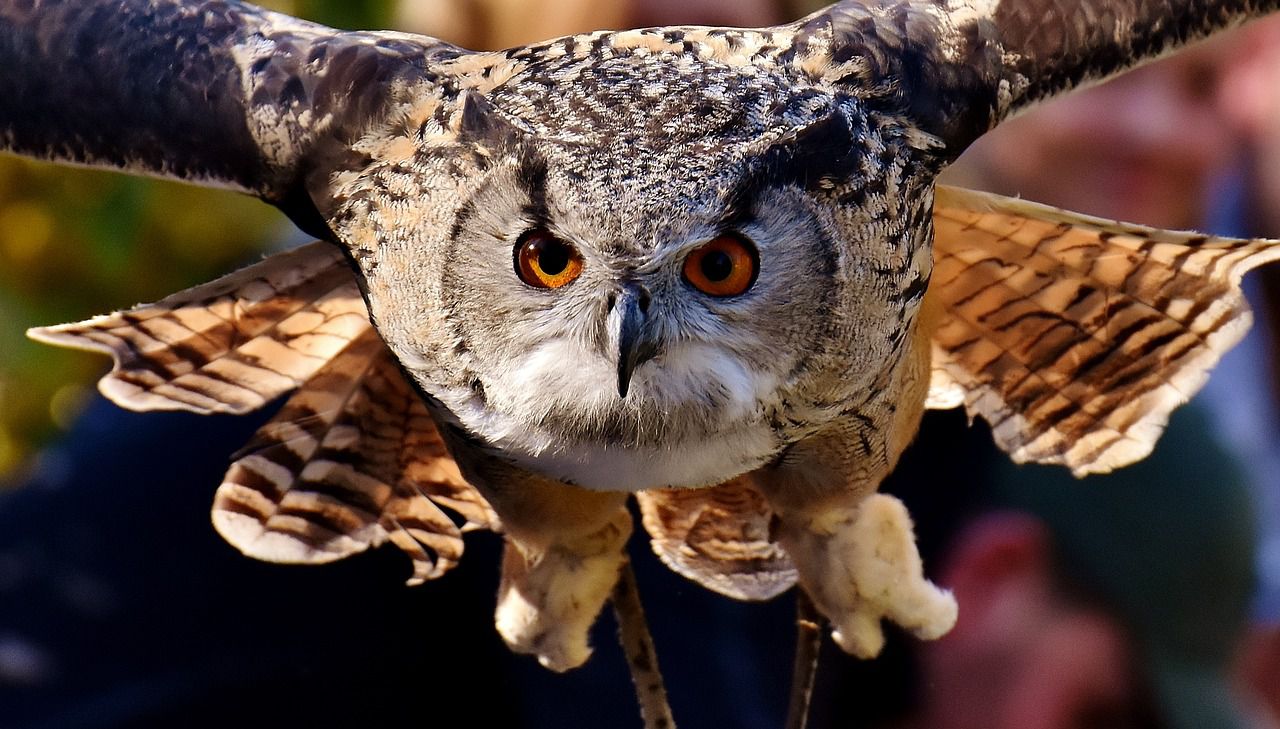Owls are known for their remarkably silent flight, which allows them to hunt with incredible stealth.
They are one of the quietest birds in the world, so you basically can't hear them flying at night.
Several key adaptations enable owls to fly quietly.

Feather Structure
Owls have specialized flight feathers with serrated leading edges.
These serrations break up the turbulent airflow over the wing, reducing noise during flight.
Additionally, the trailing edge of their flight feathers is soft and velvety, further minimizing sound production.
Large Wingspan
Owls typically have large wings relative to their body size.
This larger surface area helps distribute their weight more evenly and reduces the pressure on individual feathers, resulting in less noise when flapping.
Soft Plumage
Owls' feathers are exceptionally soft compared to other birds.
This softness reduces air turbulence and prevents the rushing sound typical of many birds during flight.
Silent Wing Beats
Owls have adapted their flying technique to minimize sound.
They use a slow, deliberate wing beat that produces less noise compared to the rapid wing movements of many other birds.
Noiseless Prey Capture
Beyond their flight adaptations, owls have evolved specialized facial feathers called facial discs that function as "radar dishes."
These facial discs direct sound waves towards their ears, allowing owls to locate prey accurately without the need for excessive movement or vocalizations.
Adapted Bones
Owls have unique bone structures, including a modified wing bone called the "comb," which helps absorb and dampen vibrations during flight, resulting in quieter movements.












